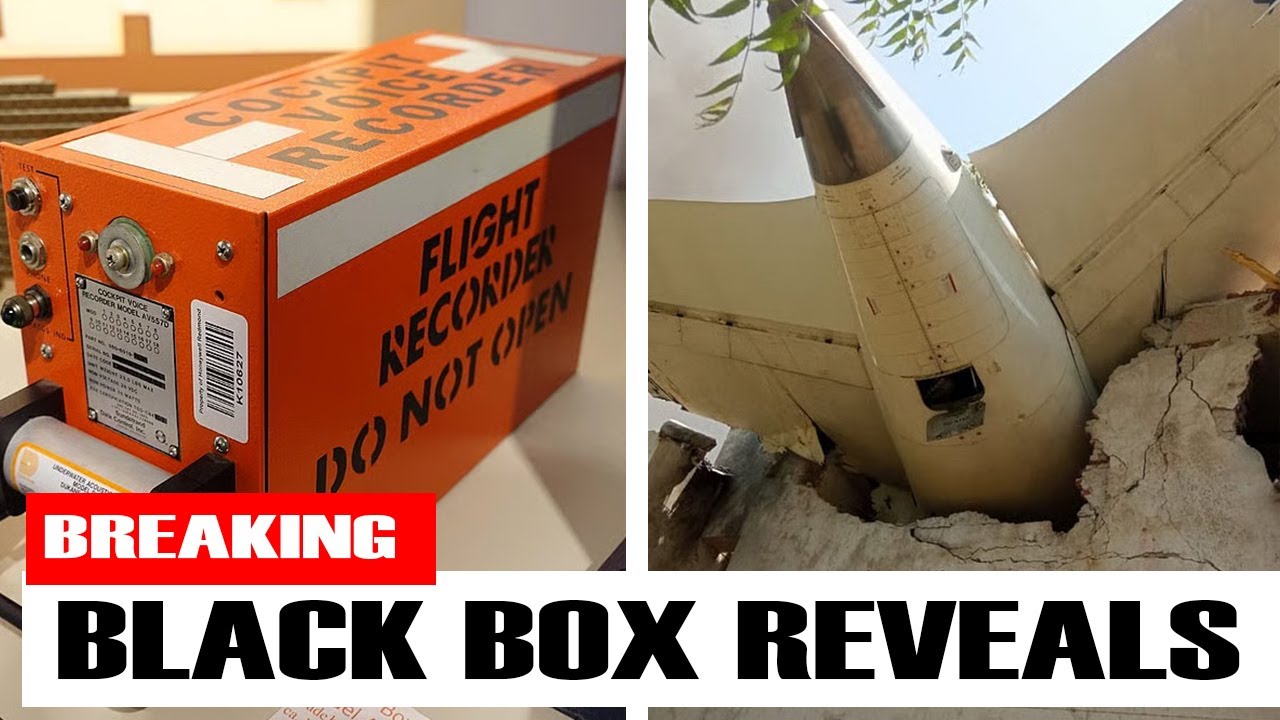The FINAL 38 seconds that shocked the world! 😱 New black box data from Air India Flight 171 reveals a chilling cockpit mystery—why did the fuel switches flip, and who was really in control? You won’t believe what they found.
👉 Dive into the truth here:

New Black Box Data: Unraveling the Final 38 Seconds of Air India Flight 171
Introduction
On June 12, 2025, Air India Flight 171, a Boeing 787-8 Dreamliner, crashed 38 seconds after takeoff from Ahmedabad’s Sardar Vallabhbhai Patel International Airport, en route to London Gatwick. The disaster claimed 241 of the 242 people on board and 19 lives on the ground, making it the deadliest aviation accident in a decade and the first fatal crash of a Boeing 787. A preliminary report by India’s Aircraft Accident Investigation Bureau (AAIB), released on July 8, 2025, pointed to a shocking cause: both engines lost thrust when their fuel control switches were moved from “RUN” to “CUTOFF” seconds after liftoff. New black box data, extracted from the Cockpit Voice Recorder (CVR) and Flight Data Recorder (FDR), has deepened the mystery, with a haunting cockpit exchange and precise flight parameters revealing a frantic sequence of events. This article explores the new black box findings, reconstructs the final 38 seconds, and examines the unanswered questions surrounding this tragedy.
The Crash: A Timeline of the Final 38 Seconds
At 1:38:39 p.m. IST (08:08:39 UTC), Flight 171, carrying 230 passengers and 12 crew members, lifted off from runway 23 after a 62-second takeoff roll. The aircraft, registered VT-ANB, was piloted by Captain Sumeet Sabharwal (15,638 flight hours, 8,596 on the 787) and First Officer Clive Kunder (3,403 hours, 1,128 on the 787), with Kunder as the pilot flying and Sabharwal monitoring. The Boeing 787-8, delivered in 2014, was equipped with General Electric GEnx-1B engines and nearly 100 tonnes of fuel.
New black box data, successfully downloaded on June 26, 2025, at the AAIB’s Delhi laboratory, provides a second-by-second account of the flight’s final moments:
08:08:39 UTC (T+0s): The aircraft lifts off at 180 knots, climbing to a maximum altitude of 625 feet (425 feet above the airport’s elevation).
08:08:42 UTC (T+3s): Both fuel control switches move from “RUN” to “CUTOFF” within one second of each other, starving the engines of fuel. Engine N2 values (core rotation speed) drop, and thrust is lost.
08:08:47 UTC (T+8s): The ram air turbine (RAT) deploys, providing limited electrical power to flight control surfaces but not the landing gear, which remains down.
08:08:52 UTC (T+13s): The pilots move the Engine 1 fuel switch back to “RUN,” triggering an automatic relight. The auxiliary power unit (APU) inlet door opens, but the APU, which takes 90 seconds to start, cannot activate in time.
08:08:54 UTC (T+15s): The Engine 2 fuel switch is returned to “RUN.” One engine begins regaining thrust, but the other has not yet recovered power.
08:09:05 UTC (T+26s): Captain Sabharwal issues a “Mayday, Mayday, Mayday” call, reportedly including “…no power…no thrust…” No response is received from air traffic control (ATC).
08:09:11 UTC (T+32s): The aircraft crashes into the B.J. Medical College hostel, 1.5 kilometers from the runway, exploding on impact.
The wreckage spread over 200 meters, destroying five buildings. The sole survivor, Vishwaskumar Ramesh, escaped via an emergency exit.
The Black Box Breakthrough
The recovery of the two Enhanced Airborne Flight Recorders (EAFRs), which combine CVR and FDR functions, was a critical step. The first EAFR was found on June 13, 2025, on a rooftop, and the second on June 16 amidst debris, both damaged by fire and impact. Despite concerns about data integrity due to temperatures reaching 1,000°C at the crash site, the AAIB, with assistance from the U.S. National Transportation Safety Board (NTSB) and UK investigators, successfully extracted the Crash Protection Module and memory module by June 26. The CVR, capturing 25 hours of audio, recorded pilot conversations, ambient sounds, and alarms, while the FDR logged hundreds of parameters, including switch positions, airspeed, altitude, and engine performance.
The CVR revealed a pivotal exchange at T+3s: one pilot asked, “Why did you cut off?” and the other replied, “I didn’t.” The AAIB has not identified the speakers, as speaker-stamping is pending. The FDR confirmed the fuel switches’ movement to “CUTOFF” and back to “RUN,” aligning with the CVR’s timeline. This data has shifted focus to the switches, located on the cockpit’s center console, which are guarded by brackets and a metal stop-lock mechanism to prevent accidental movement.
Theories: What Caused the Switch Movement?
The black box data has intensified scrutiny on three main theories:
1. Pilot Action—Intentional or Accidental?
A Wall Street Journal report, citing U.S. investigators, suggested Captain Sabharwal, as the monitoring pilot, may have moved the switches, as Kunder was occupied with flying. The switches’ design requires deliberate lifting and toggling, making accidental movement unlikely. Shawn Pruchnicki, a former investigator, noted that such an error without evident cockpit confusion (e.g., alarms or miscommunication) is rare. Both pilots passed breathalyzer tests and were rested, ruling out fatigue or intoxication. The Indian Commercial Pilots’ Association and Airline Pilots’ Association of India have criticized media for suggesting pilot suicide, calling it “reckless.” The CVR’s lack of distress prior to the switch movement further complicates this theory.
2. Design Flaw or System Malfunction
A 2018 FAA Special Airworthiness Information Bulletin (SAIB) warned that some Boeing 737 fuel control switches had disengaged locking mechanisms, a design also used in the 787-8. Air India did not inspect VT-ANB’s switches, as the SAIB was advisory, not mandatory. A 2019 All Nippon Airways 787 incident, where software misjudged the plane’s state and shut down an engine, has raised speculation about a similar Full Authority Digital Engine Control (FADEC) glitch. However, the CVR’s dialogue suggests the pilots noticed the physical switch movement, undermining a software-only explanation. The FDR showed no mechanical faults in the engines or aircraft systems, and Air India’s 787 fleet inspections post-crash found no safety issues.
3. External Factors
Early theories included bird strikes, fuel contamination, or flap misconfiguration, but these have been largely dismissed. Ahmedabad’s history of bird activity prompted scrutiny, but CCTV footage showed no significant strikes. Fuel samples were satisfactory, and the 787’s configuration warning system would have alerted the pilots to flap issues. A loud “boom” reported by the survivor and a ground witness suggested engine failure, but the FDR attributes the loss of thrust to the switch movement.
Unanswered Questions and Investigation Challenges
The black box data, while illuminating, leaves critical questions unresolved:
Who moved the switches? The CVR’s ambiguity and lack of speaker identification fuel debate. Without cockpit camera footage, which the 787 lacks, the pilots’ actions remain unclear.
Why were the switches moved? The absence of prior distress or alarms on the CVR suggests no immediate emergency prompted the action, ruling out an engine fire or obvious malfunction.
Could a design flaw have contributed? The 2018 SAIB and 2019 Osaka incident highlight potential vulnerabilities, but the FDR’s clean mechanical data and the pilots’ dialogue challenge this theory.
What role did the environment play? The 40°C heat and near-maximum takeoff weight may have strained performance, but the FDR indicates the aircraft was airworthy.
The AAIB, supported by Boeing, GE Aerospace, the NTSB, and UK investigators, is analyzing debris and switch wreckage to confirm their condition. The lack of a full CVR transcript, as demanded by families and experts like Mary Schiavo, hinders public understanding. The investigation, expected to conclude by mid-2026, faces pressure to avoid premature conclusions.
Implications for Aviation Safety
The crash has raised alarms about the Boeing 787’s systems, particularly its fuel control switches and reliance on electrical architecture. The DGCA’s inspection of Air India’s 33 Dreamliners found no issues, but a confirmed design flaw could prompt global 787 fleet checks. Boeing’s stock futures dropped 9% post-crash, reflecting industry concerns. The tragedy also underscores the impossibility of recovering from a dual-engine failure at 650 feet, highlighting the need for enhanced training and safeguards on critical controls.
Conclusion
The new black box data from Air India Flight 171 offers a chilling glimpse into its final 38 seconds, from the inexplicable fuel switch movement to the pilots’ desperate recovery attempts. The CVR’s cryptic exchange and the FDR’s precise timeline deepen the mystery, pointing to human, mechanical, or systemic factors. As the AAIB continues its probe, the aviation world awaits answers that could reshape safety protocols. For now, the haunting question—“Why did you cut off?”—remains unanswered, a stark reminder of the fragility of flight and the stakes of uncovering the truth.





